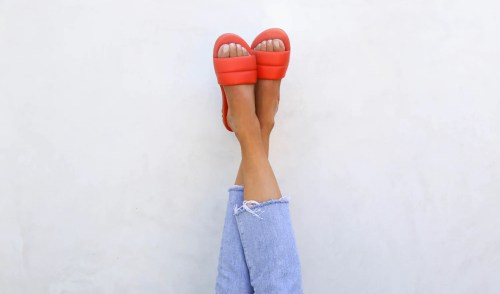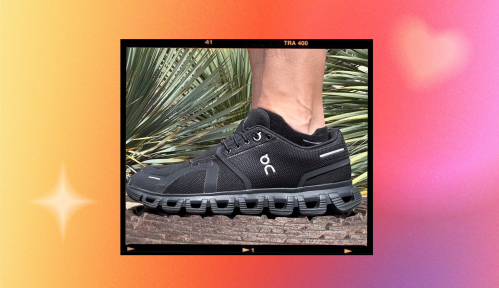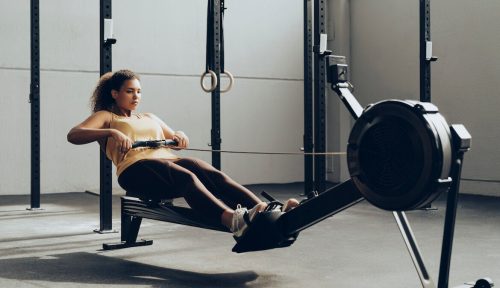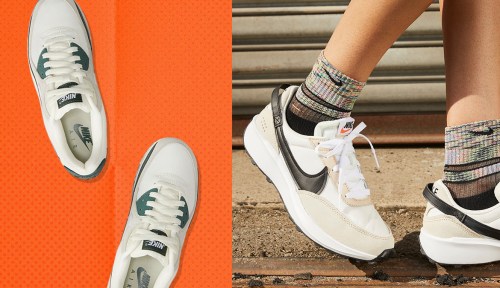Our editors independently select these products. Making a purchase through our links may earn Well+Good a commission
You wear them to boot camp,dance cardio, and even brunch—but how much do you know about your favorite shoes?
No, we’re not referencing those pink Primeknit Stan Smiths. We’re talking about your good ol’ athletic sneakers.
You may think that there’s one style that fits all, but it turns out that shopping for your favorite sneakers is—and should be—as complicated as choosing between ClassPass, Equinox, or à la carte classes (serious decision-making problems).
To help you in your search for the ultimate sneaker—whether you’re training for a marathon, perfecting your box jump, or just cruising on your bike from beach to beach—we consulted Nyles Garrison, resident shoe expert, and his team at New York City’s JackRabbit (they’ve helped thousands of people get sneaker-savvy—so they seriously know their stuff).
Starting with the most common misconception out there (that support is the same for everyone—spoiler alert: it’s not), these shoe pros answered Well+Good readers’ most pressing footwear questions.
While their number one recommendation is to visit a local store for a personalized visit with an expert, consider these answers the second-best option.
Ready to have all of your burning sneaker questions answered? JackRabbit’s marketing manager Mary Arnold has done just that—keep reading!
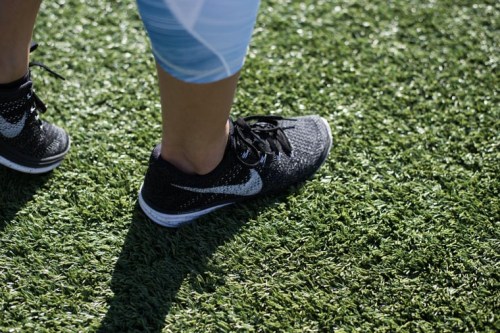
What size shoe should I be wearing?
This is one of the most common mistakes we see [at JackRabbit]. People are wearing the wrong size. You actually don’t want to wear the same size as your dress shoe—you always want to size up. There needs to be a half-thumb’s width between your longest toe and the front wall of the shoe.
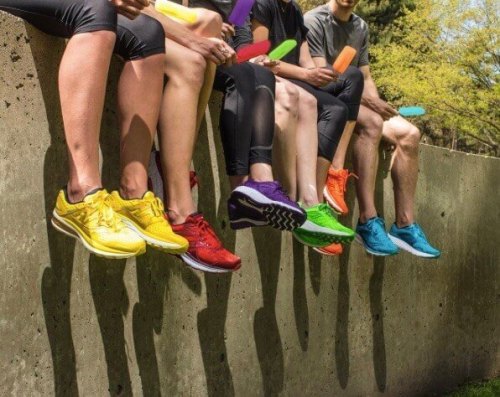
What do I do if there are no specialty running stores near me?
There are three things we can suggest in this case:
1. Focus on the fit and feel of the shoe. It should not feel tight across your instep, toes, or in the heel, and you should be able to wiggle your toes and move your foot slightly from side to side. If you look down and see your little toe poking out of the side, it’s likely that you need a wider shoe.
2. Give it a test run. The shoe should feel like it supports your arch, without causing cramping. For example, if you’re running and feel that the shoe is preventing you from flexing your arch, it is likely not the right fit.
3. Think about size. Each brand is not created equally—try multiple models from different manufacturers and, remember, a size 8 in Nike might not fit the same as a size 8 in New Balance; you may need to size up or down to get the right fit.

What are the best shoes for CrossFit? And how do I prevent heels from slipping with things like mountain climbers?
Since CrossFit involves dynamic movement through multiple planes—from mountain climbers to burpees—and various weighted exercises, a shoe with a snug upper and a low heel is ideal. This combo will help your foot move naturally, from a stable platform.
To ensure that your shoes stay snug on your heels, try this method: Loop the lace through the top hole [which isn’t usually used] on the same side, instead of across; repeat on the other side and pull the laces forward to tighten—and voila! A snug fit through the heel. [This video shows you how it’s done.]
JackRabbit suggestions:Inov-8 F-Lite 235, $91Nike Metcon, $128

My shoes sometimes begin to hurt after wearing them for only two months or so. I walk a lot, but is that normal?
Shoe midsoles—the light-colored cushioning between the sole and uppers—are made of lighter, more responsive materials than the rest of the shoe, and sometimes they’ll start to compress and feel more “worn out.” Although the midsole generally has a lifespan of 300-600 miles before you should replace it, it’s likely that you’ve reached 300 on a shoe that isn’t meant to go further. We would suggest replacing your shoes and maybe trying out a new style to see if those last longer.
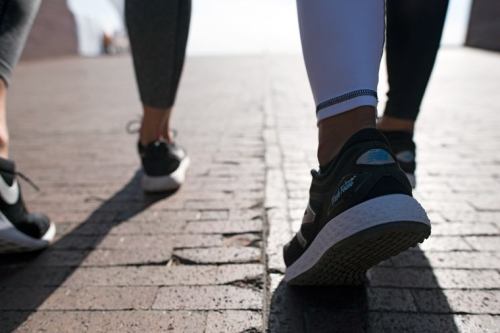
What are the best shoes for plantar fasciitis?
Plantar fasciitis can be challenging to work through—and while this is a case where visiting a local running expert would be best, there are some types of sneakers you can look for. Shoes that offer a higher heel can help alleviate some of the discomfort. (As an aside, the only shoes that we would personally recommend avoiding to stave off plantar fasciitis or other related maladies are flip-flops.)
JackRabbit’s suggestions:Asics Nimbus, $111Nike Vomero, $69

What are the best shoes for long-term standing that minimize knee and lower back pain?
Shoes with maximal cushioning can be a godsend for people who are on their feet all the time. They can absorb up to 80 percent of the shock that travels up your kinetic chain while walking or running!
JackRabbit’s suggestions:Hoka Clifton 3, $130Altra Olympus, $59.99
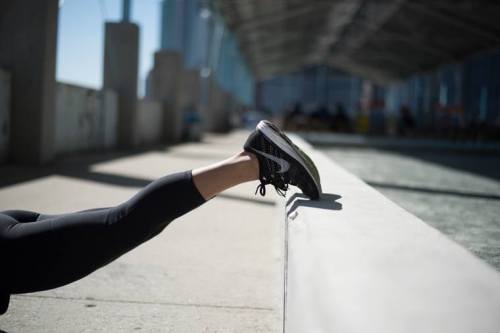
What are the best shoes for flat feet?
Flat feet will typically benefit from a little extra stability in the midsole, to help prevent the foot from [getting out of alignment]. Look for models that provide good stability without overcorrecting.
JackRabbit’s suggestions: Brooks Adrenaline, $103Saucony Guide, $110

Best shoes for high-impact dance cardio?
Lightweight, flexible shoes can provide impact protection and durability during high-impact classes, like dance cardio. Look for flexible midsoles, minimal weight, and uppers with an almost sock-like feel.
JackRabbit’s suggestions: Saucony Kinvara, $79.95Nike Lunar Epic Low FlyKnit, $160
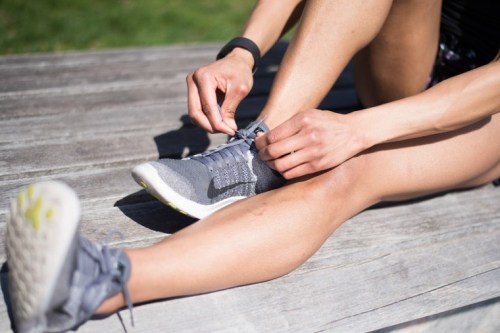
How do you know when it’s the time to get new sneakers?
There are three major signs of shoe death; if you see one, it’s likely you have a few weeks left on the shoes. Spot two or more? It’s time to get a new pair.
1. Visible wear in the midsole in the form of creases, crinkles or pock marks. Take a look at the side of your shoe (not the bottom). Look at the lighter, softer material between the upper and outsole (bottom tread). If you spot creases or crinkles, it is likely that the midsole is beginning to wear through.
2. The upper part of the shoe is worn out. Flip the shoe around and look at it from the top—as if your foot was in it. Do you see holes or tears in the upper? Does the fabric appear to be bunching or gaping? Or more simply, does it look exactly like your foot? If so, it is an indication that the upper is stretching out and not holding your foot to the midsole properly. Alternately, if you find yourself having to tie the shoes tighter and tighter, this can also be an indication of wear on the upper.
3. The midsole is compressed. Hold the shoe over a hard surface and drop it gently down from a height of four to six inches. Watch it land and look for how much it rocks back and forth upon impact. Does it drop and stop? Does it rock a little? Is it still rocking? If it’s still rocking, chances are the midsole has compressed down to the point where it is no longer rebounding and protecting your feet.
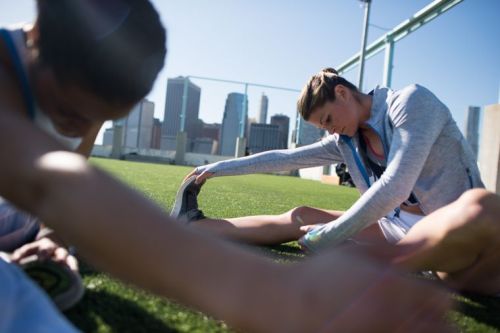
Is there a way to prevent stink?
Moisture-wicking socks are the number one way to combat odor. The human foot can lose up to two ounces of fluid in an hour—that’s a shot glass worth of sweat! Socks that pull the moisture up from your skin and allow it to evaporate help prevent residual sweat from stinking up your shoes.
After a rainy, sweaty, or muddy workout, take your shoes to a dry spot and remove the sockliner. Stuff the shoe with newspaper and allow them to dry. This should keep even the sweatiest shoes relatively stink-free.
As a side note, do not ever put your shoes in the wash! Hand wash only and allow them to dry. This will prevent damage to the upper and midsole.
How to keep the rest of your activewear stink-free? An expert dishes on how often you really need to wash your workout clothes. And once you do lace up, don’t let yourself fall for these 11 running myths.
Sign up for the Well+Good SHOP Newsletter
Get exclusive deals on wellness, beauty, fitness, and food products that have been hand-picked by our editors.
Got it, you've been added to our email list.



